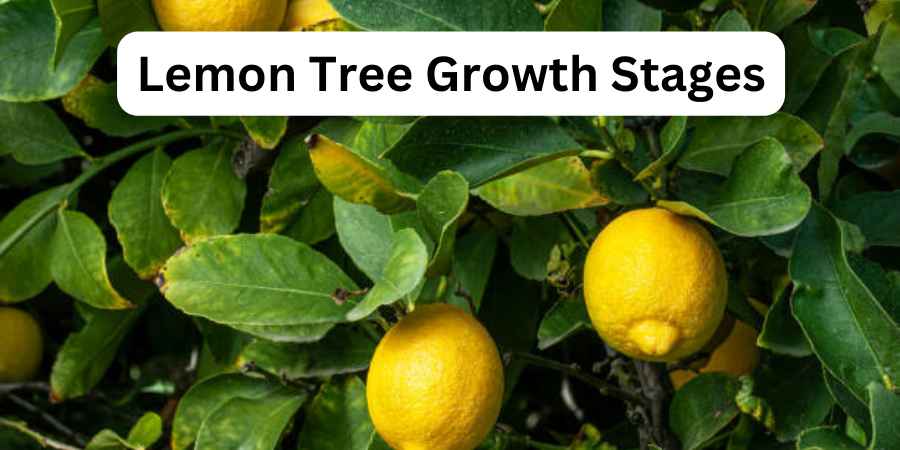Last Updated on July 29, 2025 by Jocelyn
Lemon trees grow through six clear stages: seed germination, seedling, vegetative growth, flowering, fruit development, and ripening. Germination begins within five to ten days.
The seedling then forms roots and small leaves before entering a period of steady growth in the first few years.
After that, the tree produces flowers, often in the second or third year. Once flowers are pollinated, small green fruits appear. These gradually grow and turn yellow as they ripen, a process that takes several months depending on the climate and variety.
To grow lemons at home, choose a sunny spot with well-draining soil. In USDA zones 9 to 11, planting outside works well. If growing indoors, place the tree near a bright window. Water when the topsoil feels dry, but avoid overwatering.
Fresh lemons support cooking, cleaning, and natural health uses. With consistent care, the tree will begin to produce usable fruit regularly.
Table of Contents
ToggleLemon Tree Growth Stages – 7 Steps to a Bountiful Harvest
Growing lemon trees starts from a tiny seed and ends with a mature lemon tree offering delicious fruit. Imagine enjoying fresh lemons from your backyard! With the right care and conditions, this dream can become a reality.
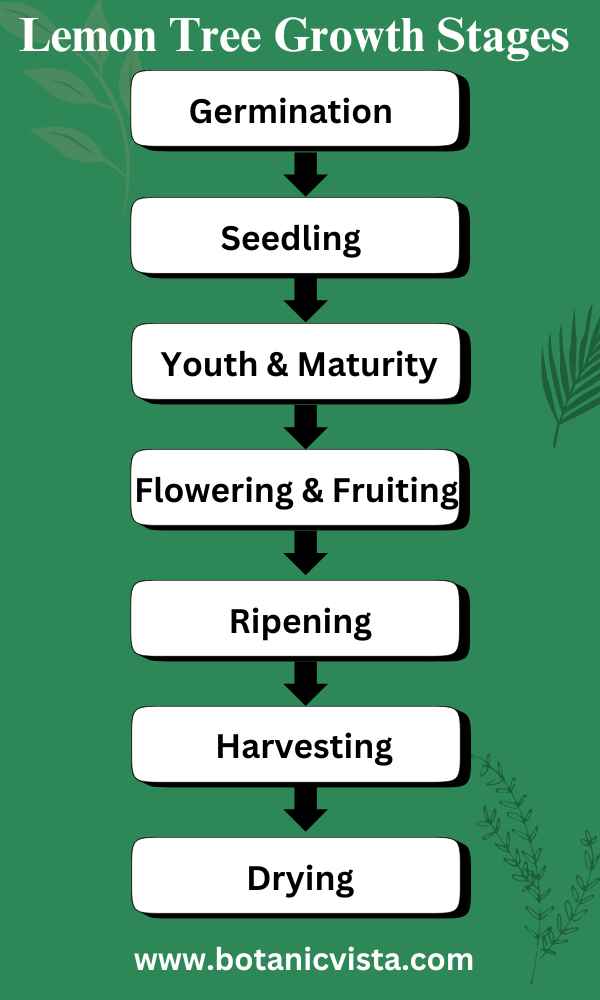
Now, let’s discuss the stages in detail.
1. Germination Stage
When you plant a lemon tree seed, the germination phase begins, typically taking 5 to 7 days for the seed to sprout in a moist environment. Hidden beneath the soil, the seed absorbs water, which softens its shell to foster the growth of a new seedling.
This seedling emerges with a milky white hue, signaling healthy root development. This young seedling requires careful watering to maintain the right moisture level without becoming waterlogged.
It grows in short increments, reaching upwards and preparing for its eventual move outdoors. As the last anticipated frost passes, it’s time to gradually acclimate the seedlings to the outdoor area.
Once planted in a sunny spot, ideally in spring, the lemon tree benefits from plenty of sunshine, encouraging strong growth and leading to blooming.
These early stages, nurtured indoors with optimal conditions, ensure a smooth transition and a healthy start for the tree.
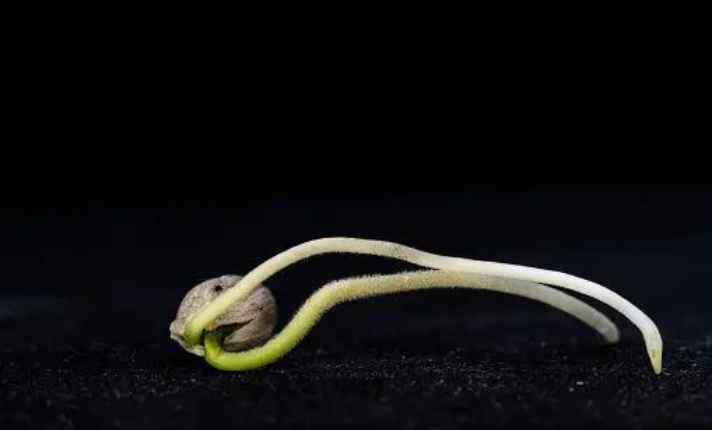
2. Seedling Stage
Planting a lemon seed begins the seedling stage, needing well-draining soil, and the right balance of sunlight and water to support growth. Lemon trees do best in full-sun locations, but they should be shielded from excessive heat.
Transplanting is essential once the seedling outgrows its initial spot, setting the stage for a healthy, productive tree.
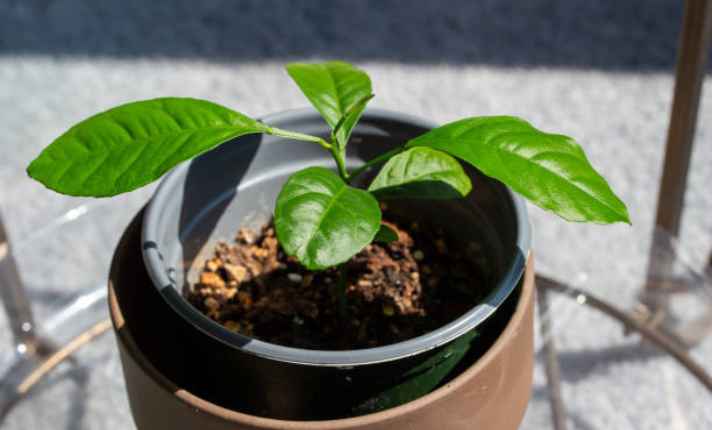
3. Youth & Maturity Stage
As lemon trees develop, their trunks become sturdier and they start forming branches. It’s vital to balance water and nutrients properly – too much can lead to root rot, threatening the tree’s health.
In the maturity stage, the tree sports denser leaves and branches, boosting photosynthesis. Protecting the tree from cold temperatures and pests is crucial to maintaining robust trunks and healthy leaves.
Wrapping the trunk with burlap during frosts can shield it, helping ensure the tree remains a vital part of your garden for years.
4. Flowering & Fruiting Stage
Lemon trees need special care to produce juicy, delicious fruits. In early spring, the temperatures rise and white, beautiful blooms start to form. This stage is exciting as buds bloom and flowers begin to form.
To see lemon fruits ripen, ensure your container lemon tree has a drainage hole. Young trees can suffer from root rot if there’s no adequate drainage. They produce their first fruits in about 2 years.
Pollinators play a key role in this stage, as the tree is self-pollinating. A lemon tree needs the proper amount of water and light to produce healthy fruits.
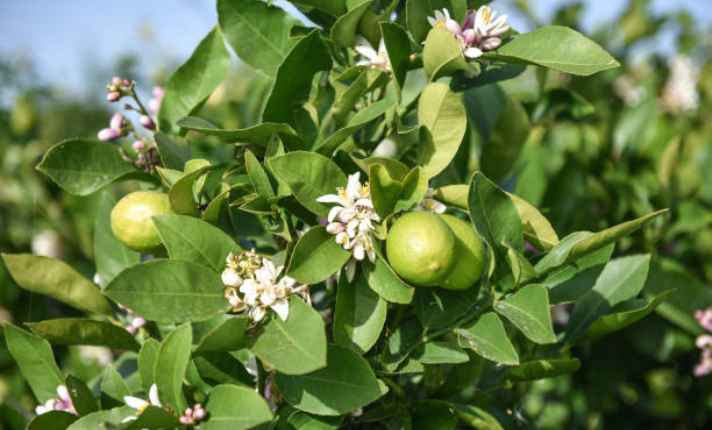
5. Ripening Stage
Lemons start off green and slowly change color as they ripen. This process takes about 4 months to mature and requires careful attention.
The sunlight helps convert the greenish-yellow skin to a vibrant yellow, making them ready for harvesting.
In a backyard lemon tree, lemons turn from small green to bright yellow every summer. To get the best lemons, monitoring their growth closely is crucial. Too much or too little water can impact their development.
Pests and infestation can also harm the lemons, so addressing any issues quickly is essential. Regularly pruning the branches helps the lemons grow larger and juicier.
Weather plays a significant role in the ripening process. Warm temperatures help the lemons convert starches into sugars, enhancing their sweet taste.
It’s fascinating how nature influences the growth of these delicious fruits.
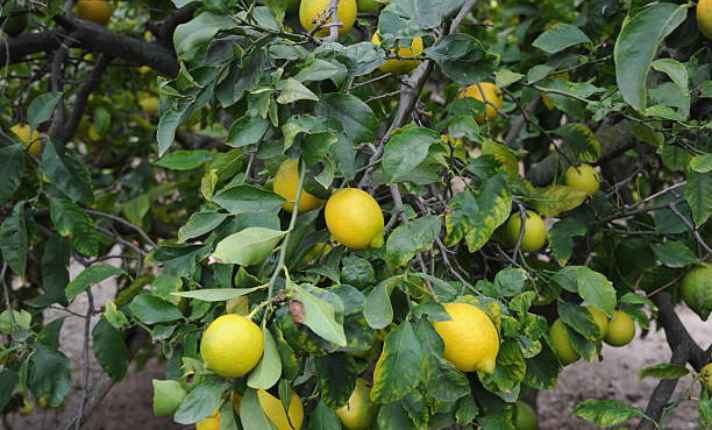
6. Harvesting Stage
In a sunny backyard, green fruits slowly turn yellow as they ripen. Each lemon reaches a firm stage, ready for harvesting.
Sometimes, picking them too early results in slightly unripe lemons. But when they are just right, they are confidently harvested. Regular care is essential. Growers wait for the right moment, ensuring the lemons are not picked prematurely.
Different varieties, like the Meyer lemon, are known for their unique sweetness.

7. Drying Stage
As lemon trees age, they may start drying. Withered leaves and discolored fruit are common signs. Cultivators should monitor water levels closely. If drying occurs, the tree won’t produce good lemons.
A tree in the garden looked bad due to lack of water. Proper watering helped it recover, showing the importance of consistent care.
When the fruit is ripe, it should be gently picked to avoid damage. Leaving it too long can cause it to detach and start dying. Regular watering and attention are key to cultivating healthy lemons.
5 Top Lemon Tree Care Tips
Cultivating a lemon tree requires attention to detail and an understanding of its needs from the ground up. Here are some essential tips to ensure your tree not only survives but grows healthily through each stage of its life.
1. Care Practice for Robust Growth
To ensure your lemon tree flourishes, start with the right soil types. Opt for well-drained and slightly acidic soil, perfect for root health and nutrient absorption.
Position the root ball at ground level when planting in a hole, ensuring stability and proper growth.
2. Optimizing Watering Techniques
Watering your lemon tree correctly is crucial, especially the first three months after planting. If rainfall isn’t sufficient, adjust water intervals to maintain optimal health.
In dryer climates, consider a humidity tray with pebbles to enhance moisture around your tree.
3. Fertilizing Strategies
Using the right fertilizer can boost your tree’s health. Mix citrus fertilizer into the planting hole, applying 1 to 2 pounds of slow-release formula.
This is critical in months like November, March, June, and August to support growth and fruit production.
4. Maintaining Soil Moisture and Drainage
Mulching with lawn clippings or wood chips helps maintain soil moisture and improves drainage, crucial in developing acidic soil conditions that benefit the tree’s nutrient uptake and root health.
5. Effective Pest and Disease Control
Keep an eye out for pests like aphids, scale, and mealybug mites, and manage fungal diseases effectively to prevent issues like root rot and botrytis.
Choose resistant varieties and employ good sanitation to reduce disease risks.
FAQ’s
Q: How Long Does It Take a Lemon Tree to Grow from Seed?
A: It typically takes 3 to 6 years for a lemon tree to grow from seed and start producing fruit.
Q: How to Tell if a Lemon Tree Will Fruit?
A: To tell if a lemon tree will fruit, check for healthy leaves, ensure good soil with proper nutrients, and make sure it gets enough sunlight.
Lack of water, insufficient sunlight, and bad soil are common problems that can stop fruit production.
Q: What Does an Overwatered Lemon Tree Look Like?
A: When a lemon tree gets too much water, its leaves turn yellow. After a heavy watering routine, leaves start dropping off. The ground around it stays wet all the time.
Q: What is the Lifespan of a Lemon Tree?
A: Meyer lemons, a hybrid of traditional lemons and mandarin oranges, typically live around 50 years. Their fruiting starts early, usually within 2 years of planting, and the trees continue producing fruit for many years.
Q: What Is the Best Fertilizer for a Meyer Lemon Tree?
A: Use a balanced fertilizer like 10-10-10 or 14-7-14, which provides the right mix of nitrogen, phosphorus, and potassium. This helps the tree grow strong and produce healthy fruit.
Conclusion
Lemon trees start from seeds or seedlings, entering germination. Proper soil and care ensure healthy growth. As flowers bloom, lemons form, maturing into juicy fruits.
Watching this process offers valuable information on how to improve and enjoy your lemon harvest, whether for fresh lemonade or using the lemon peel in creative ways.
Now is the perfect time to start growing your own lemon tree. Whether indoors or outdoors, all you need is a bit of space and attention to enjoy homegrown lemons all year round. Get started today and bring fresh flavors and natural solutions right to your home!
Also read:
